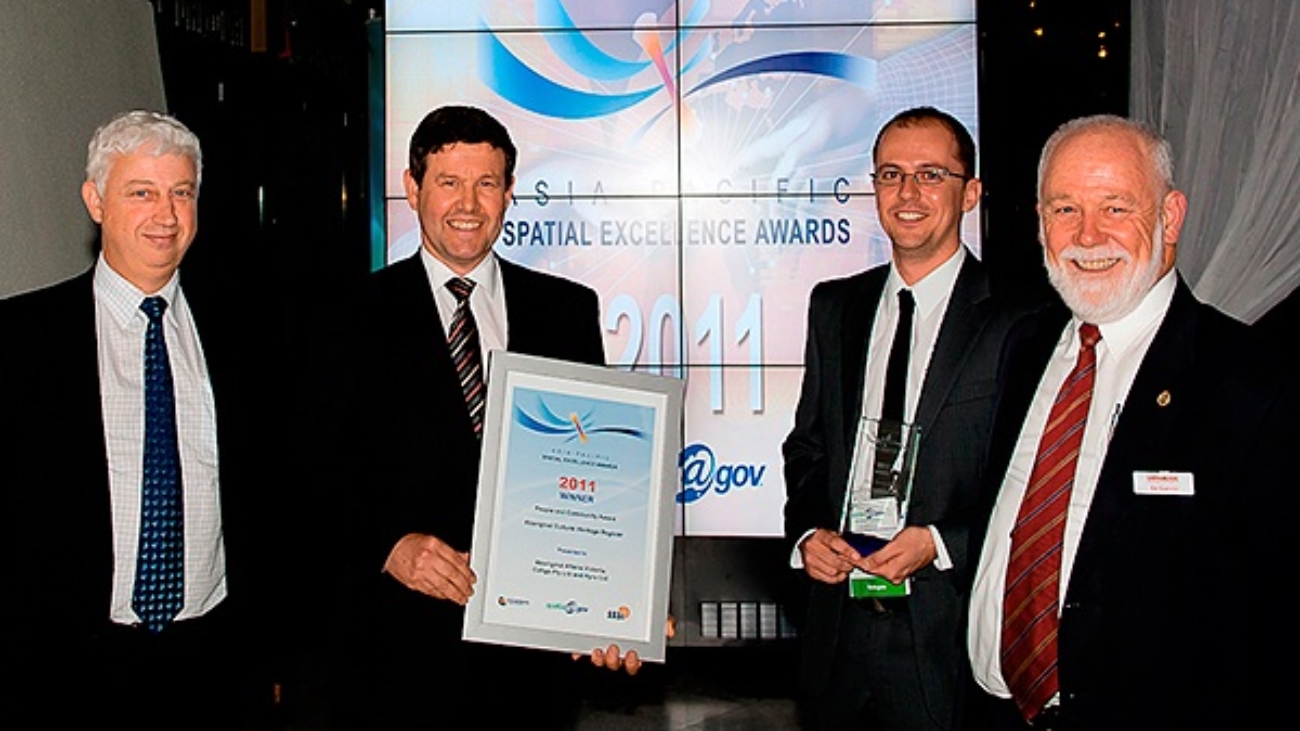Aboriginal Affairs Victoria, a unit of the Department of Planning and Community Development has won first the Victorian and subsequently the Australian Spatial Excellence 2011 awards in the category Community Service for the ACHRIS system based on Weave.
The award recognises the efforts of the Department of Planning and Community Development and particularly its Aboriginal Affairs Victoria section for the efforts in improving the services to Aboriginal communities through the Aboriginal Cultural Heritage Register and Information System (ACHRIS) system.
At the time, the judges commented “In another very closely fought category, ACHRIS addresses a community based problem with wide ranging impacts. The system has garnered strong support from the Aboriginal community as a key stakeholder, while at the same time streamlining the business processes that support the management and protection of our Aboriginal Cultural Heritage“.
Graeme Taylor with the national award at the APSEA function in Canberra for the ACHRIS system presented by Ed Garvin Director SIBA (Right). With him are two other representatives of the ACHRIS team, Peter Hodder, Director of Tekbase (Left) and Shannon Whitty from Aboriginal Affairs (Second from Right).
For more information on the ACHRIS system, read the full story.





